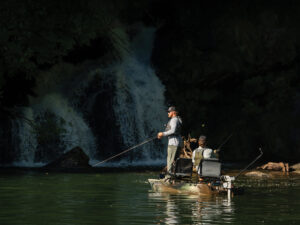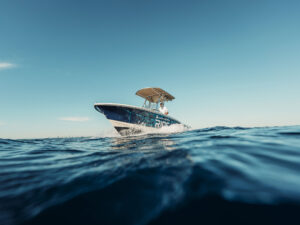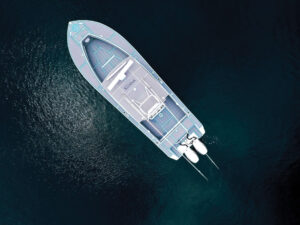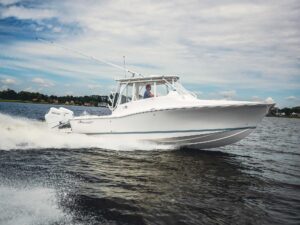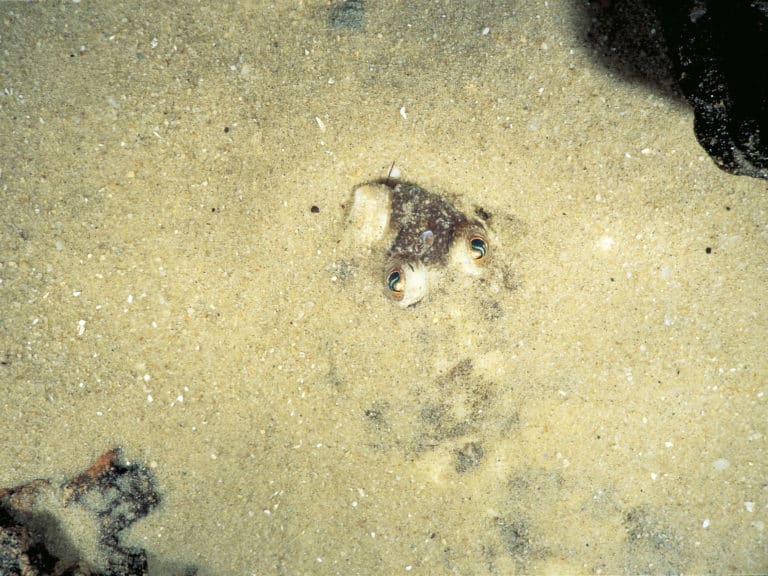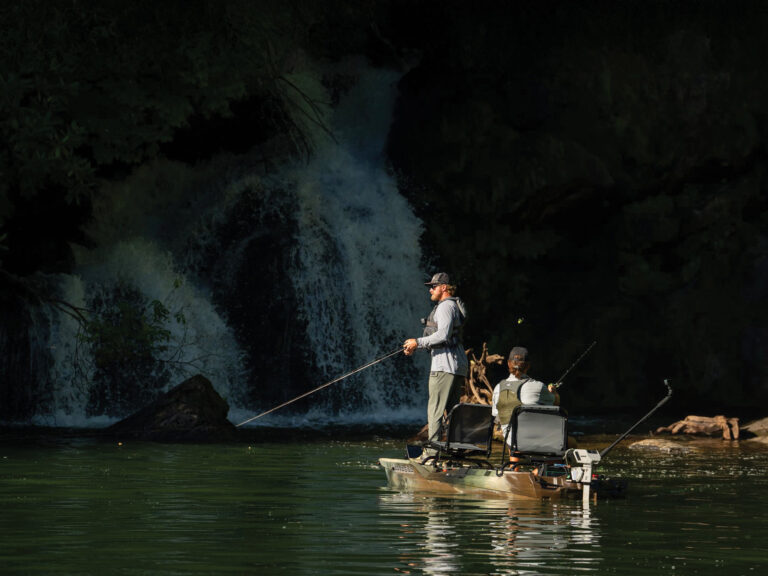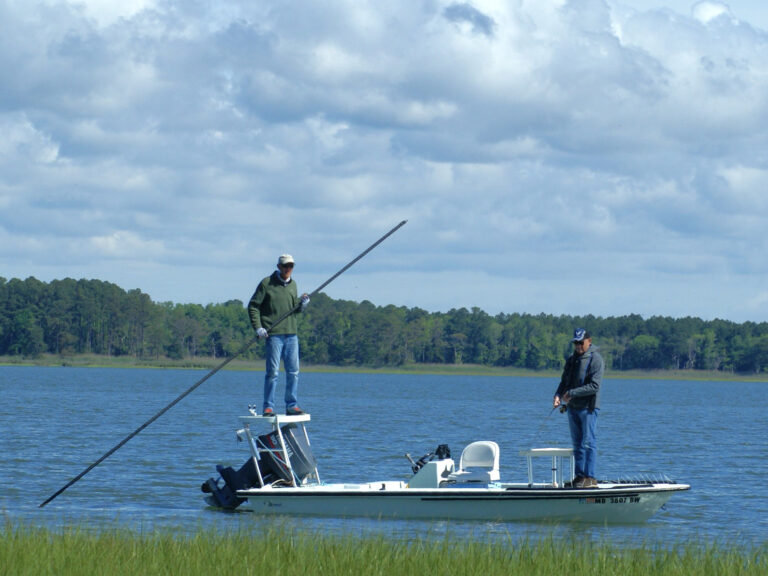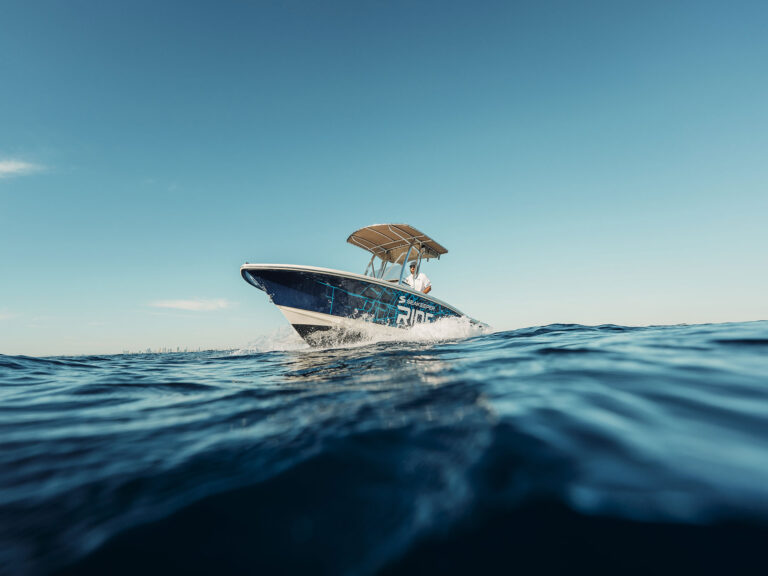Sport Fishing boating expert and editor Jim Hendricks describes the Seakeeper 3 during a demonstration ride at the Miami Boat Show 2017. The demo caps off this article (below), which he wrote for the February issue. (Shot with a GoPro HERO5.)
Compact Installation
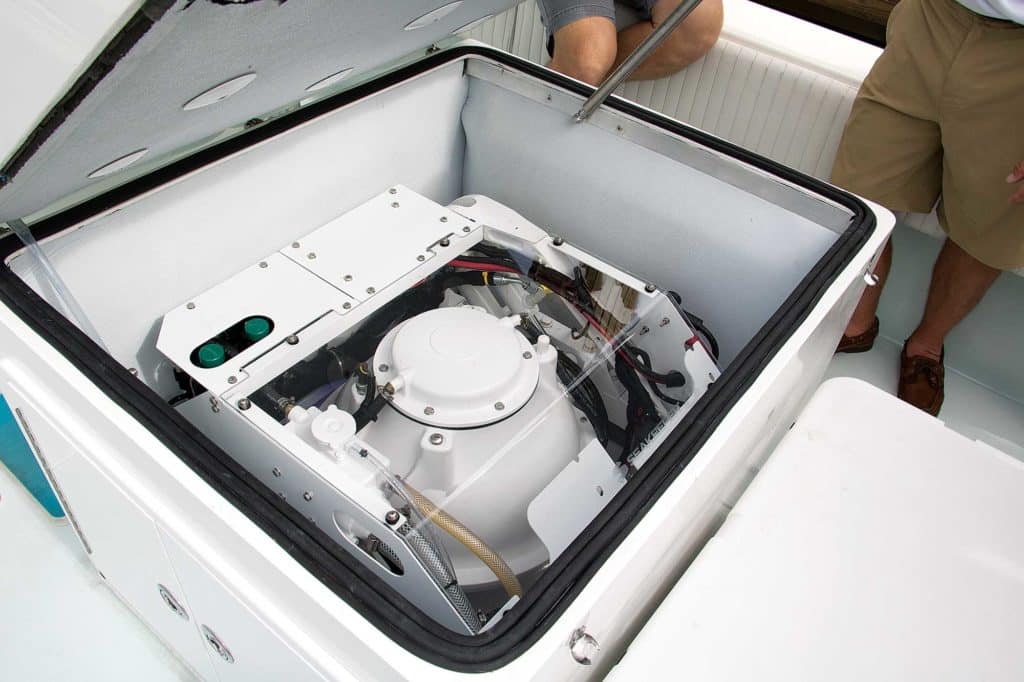
My late friend Dick Uranga used to liken a day of offshore fishing to spending eight hours on an exercise machine. Indeed, after returning from many a trip in rough seas, my legs and back ached the next morning, the lingering effects of constantly working muscles to maintain balance. I have a name for the pain: angle-over. Yet if Seakeeper has its way, angle-over and even the misery of seasickness will be rare occurrences in the future. This Maryland-based company has staked its claim on gyroscopic stabilization technology to eliminate rolling (side-to-side) motion.
There are other brands in this field, including Boat Stabilizer Anti Rolling Gyro and Veem Gyro, but none have been as aggressive as Seakeeper in developing new systems.
Seakeeper offers a wide range of models for recreational and commercial boats, including its biggest, the Seakeeper 35 for yachts of 85 feet or more in length. Yet, it is the most compact and affordable gyro stabilizer yet — the new Seakeeper 3 — that holds the greatest potential for boating anglers. It’s optimized for boats as small as 30 feet in length — a category that represents a big percentage of the saltwater market.
How Gyro Stabilizers Work
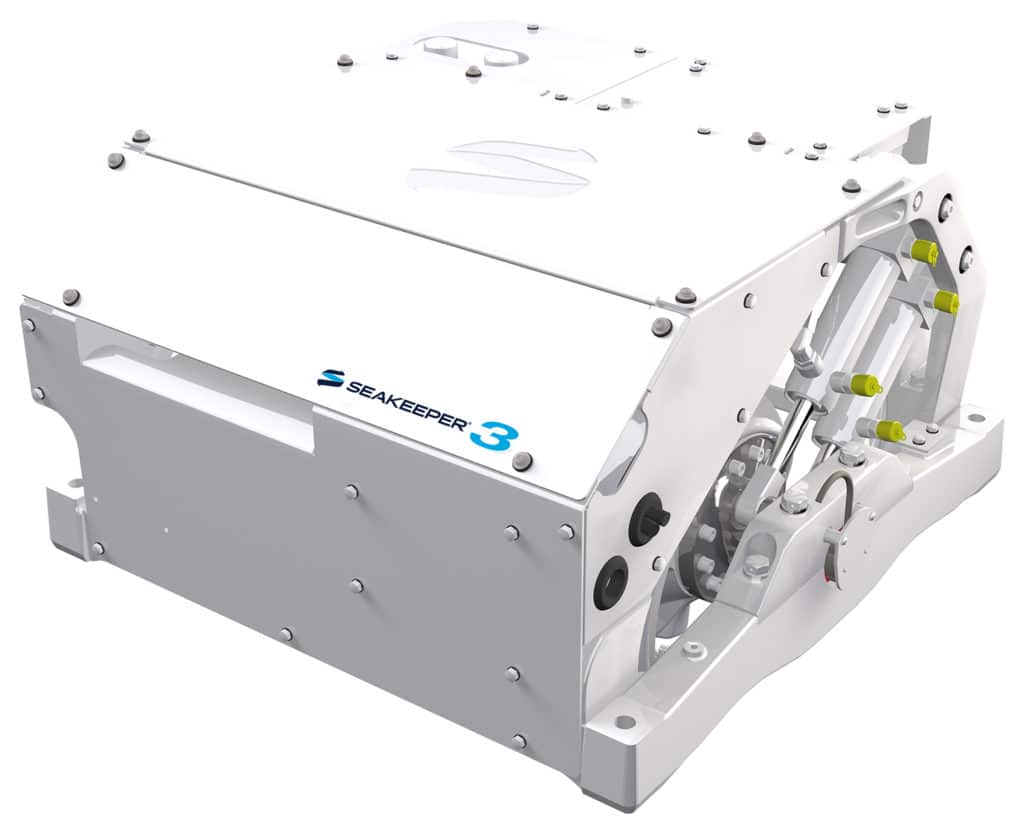
To understand how a gyro stabilizer works, think of a bicycle. When not moving, the bike easily flops from side to side. Yet when you’re riding it, the spinning wheels result in a gyroscopic stabilizing effect to keep it upright and stable, at least for the most part.
The same principle is at work with a product such as a the SK3. The motorized gyroscope keeps the boat from rolling, whether at rest or underway. By design, it has no effect on pitch (fore and aft motion) or yaw (lateral movement). Eliminating pitch would prevent the boat from meeting waves in a seakindly manner; eliminating yaw would interfere with the ability to safely steer the boat.
Trial Comparison
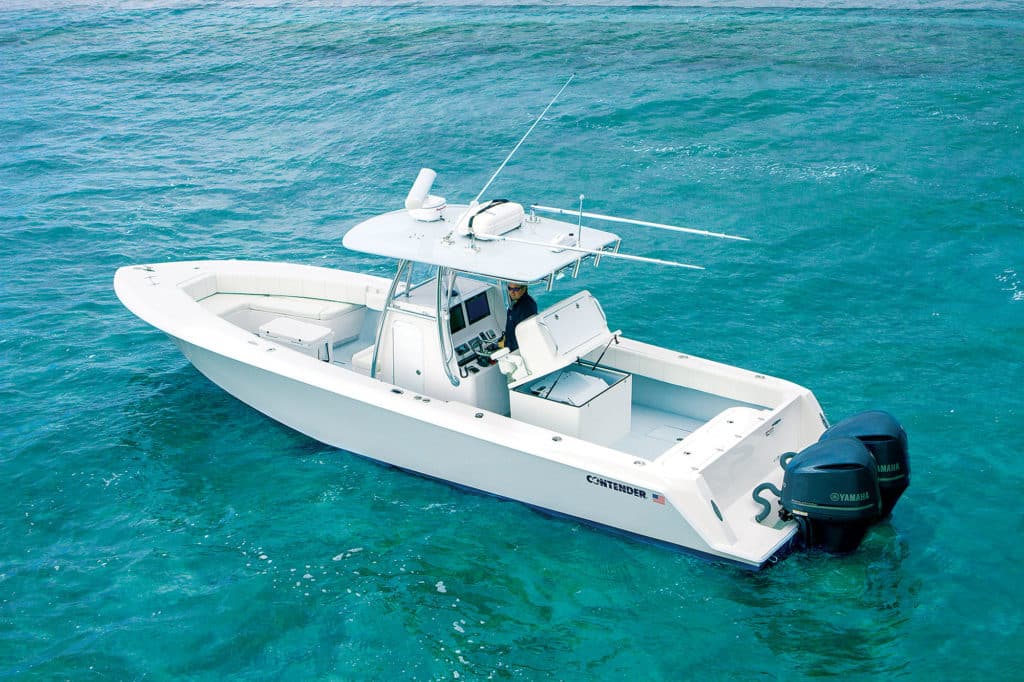
I recently had the chance to test the capabilities of the SK3 in the Atlantic Ocean waters off Fort Lauderdale, Florida, aboard a Contender 35 ST. This was my second experience with Seakeeper. A year earlier I had tested the predecessor model, the SK3DC, aboard the same boat and in the same waters. I found the new model to offer an improvement in response time, effectiveness and overall feel.
While the older 3DC was powered by 12 volts DC, it used an inverter to convert the battery juice to AC power. The SK3, on the other hand, operates entirely on 12 volts DC, with no need for AC input, such as from an onboard generator.
Though the SK3 can operate from the power supplied solely by outboard-engine alternators, the system on the Contender 35 ST test boat was backed up by a bank of three 31-series batteries connected in parallel. “If the engines are not running, the Seakeeper 3 can run four to six hours on the three batteries, depending on sea conditions, and it will shut itself off automatically if voltage runs too low,” says Capt. Parker Elliott, who assisted with the trial.
Maximum draw is 85 amps during spool up, but during operation, the draw decreases to 35 to 75 amps, depending on the sea state.
Easier to Install
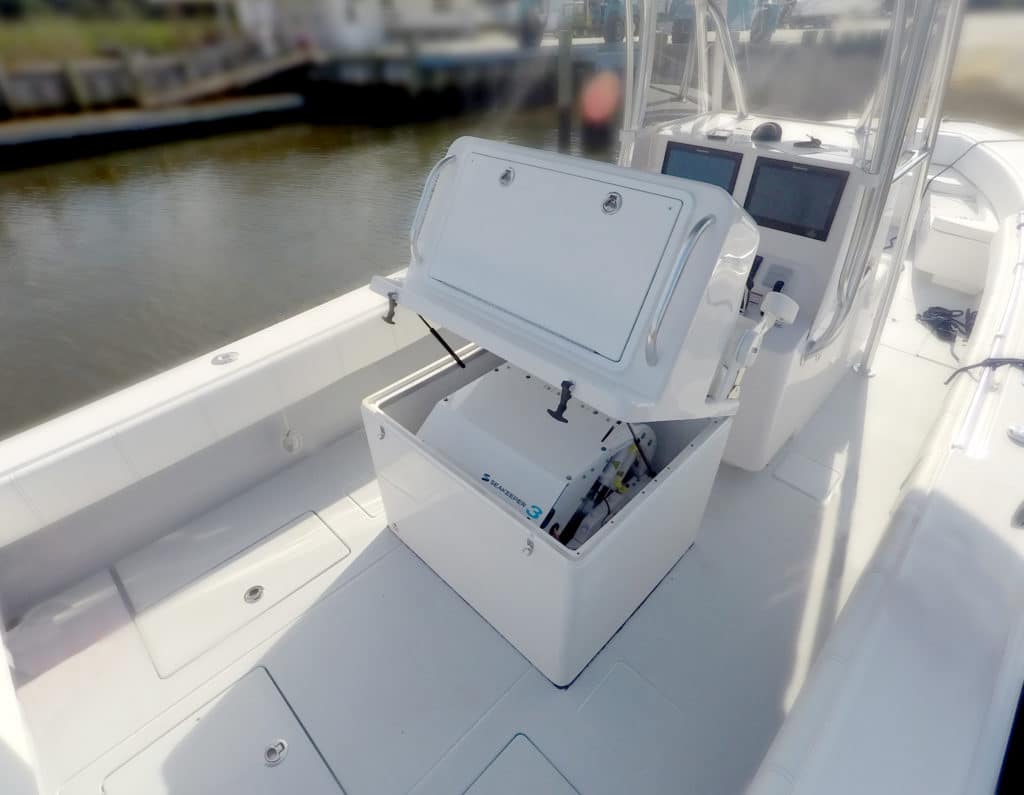
Tipping the scales at 550 pounds with lube and coolant, the SK3 weighs 30 percent less than the previous iteration. It also features a more versatile mounting system. While the 3DC was mounted to the stringers, the new system bolts to the deck. A pocket cutout in the sole is still required because a portion of the new model protrudes below deck.
Seakeeper offers an optional leaning post that serves as a housing for the gyro stabilizer aboard center console boats. The SK3 measures 26.8 inches long by 27 inches wide by 22.5 inches tall.
The SK3 requires approximately 36 minutes to spin up to operational speed and 50 minutes to its maximum-rated 8,450 rpm. Once up to speed, it proved more responsive than the previous system when flipped from off to on, requiring only about two seconds to stabilize the roll. The older model needed about four to five seconds.
Seakeeper’s new model also proved more effective in reducing roll in 2- to 3-foot beam seas while at rest, stabilizing the 10- to 15-degree side-to-side movement to between zero and 2 degrees, according to my tests with an inclinometer. The previous system reduced roll to between 2 and 5 degrees in the same kind of sea conditions.
The stabilizing effect makes it safer, easier and less tiring for crew to function, keeping everyone sharp throughout an entire day of fishing. Eliminating roll also enhances the ride, preventing the boat from heeling over due to an unbalanced load or propeller torque. Maintaining an even keel also prevents the potential for the dreaded hard landing on a chine after launching off the crest of a wave.
More Natural
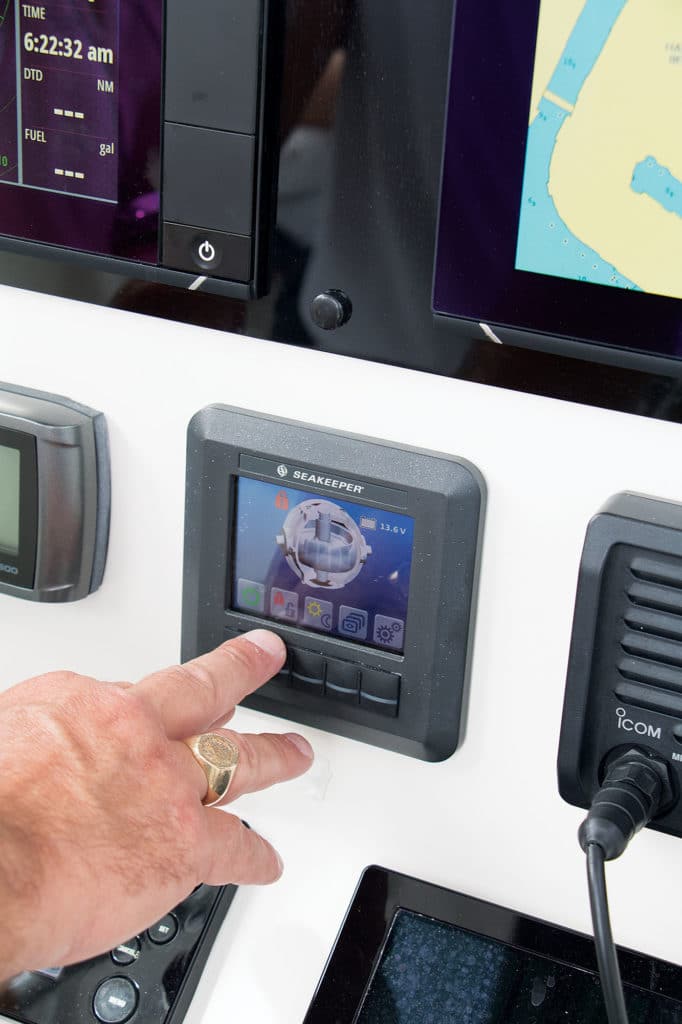
Not all of my measurements were empirical. One was subjective. I wanted to see how it felt to stand on a stabilized deck on an otherwise rolling sea. As boating anglers, many of us have certain muscle memory resulting in the ability to balance ourselves by anticipating wave action and shifting our weight to compensate for the motion of the deck. Those who have acquired such a second nature are said to possess sea legs.
Trouble is, that instinct remains, even when the rolling motion is virtually nil. You spy the approaching waves, and your conditioned response is to sway with the deck. Yet the deck does not roll; it only pitches. It’s a very unnatural sensation for those with sea legs.
Intuitive Display
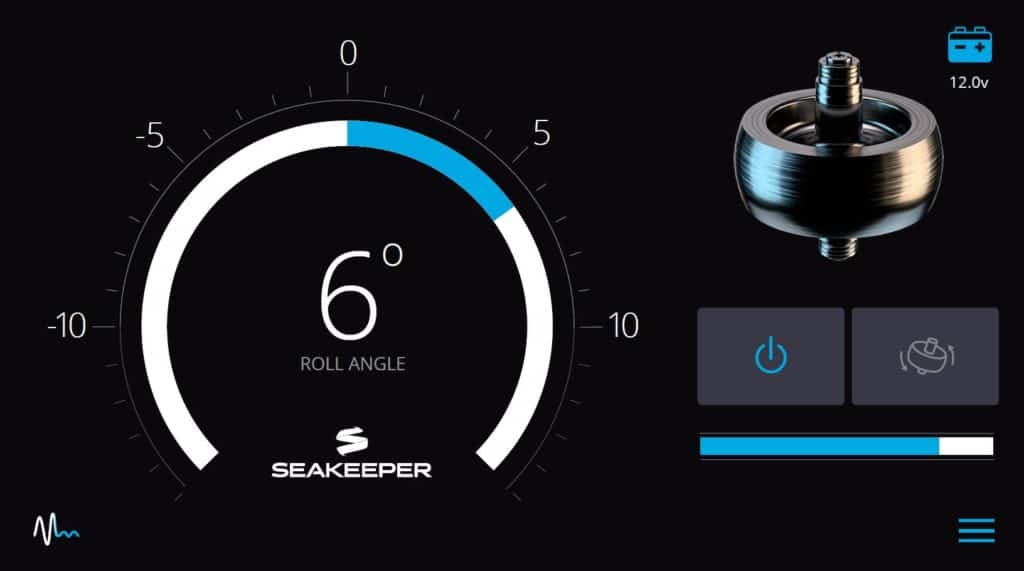
Yet it was more comfortable with the SK3. With the previous system, I could feel the gyro constantly working, tugging the boat from side to side to correct for the wave action. Not so with the SK3. After Elliott turned on the gyro and locked the boat level, the corrective action seemed virtually seamless. Aside from a slight hum, operational noise was nonexistent.
The system comes with a control display; it will also integrate with touchscreen displays from Raymarine and Simrad once the SK3 is available in April 2017.
Stabilizing Costs
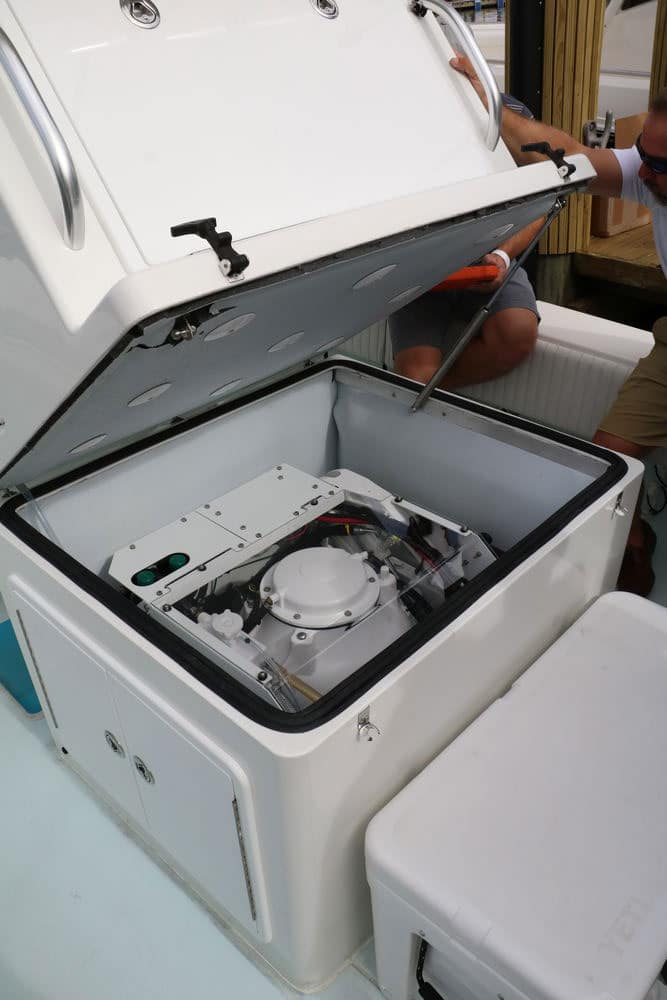
At $26,900 retail, the SK3 represents the most affordable gyro-stabilization system ever. It’s tough to pinpoint installation cost — too many variables from boat to boat. To give you an idea, however, installation aboard the Contender 35 ST demo boat required 16 hours of labor, though much of the requisite wiring and hoses were already in place from the previous unit.
The way I see it, this system and those that follow will become common options, like marine generators and air conditioning, on new center console boats. Why not? It will make days offshore far more enjoyable and safe for those without sea legs … and less painful for those with them.

